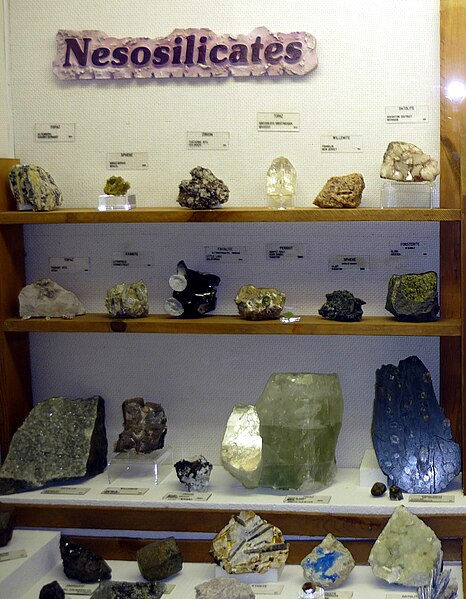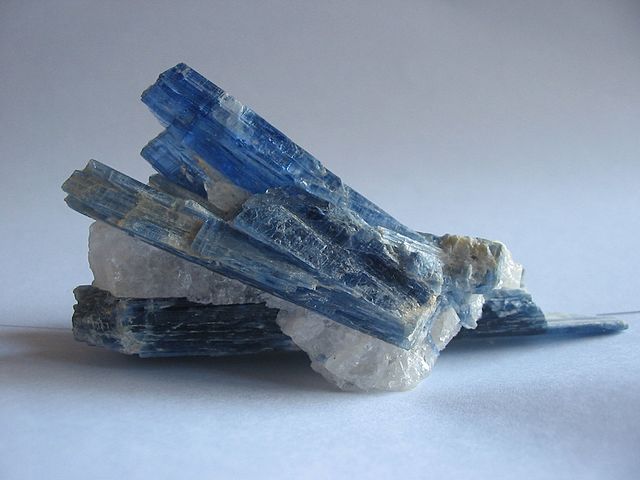Asbestos is a naturally occurring fibrous silicate mineral. There are six types, all of which are composed of long and thin fibrous crystals, each fibre being composed of many microscopic "fibrils" that can be released into the atmosphere by abrasion and other processes. Inhalation of asbestos fibres can lead to various dangerous lung conditions, including mesothelioma, asbestosis, and lung cancer. As a result of these health effects, asbestos is considered a serious health and safety hazard.
Fibrous tremolite asbestos on muscovite
Industrial scale asbestos mining began in 1878 in Thetford township, Quebec. By 1895, mining was increasingly mechanized.
Canada's biggest power shovel loading an ore train with asbestos at the Jeffrey Mine, Johns-Manville Co., Asbestos, Quebec, June 1944
The applications of asbestos multiplied at the end of the 19th century—this is an advertisement for an asbestos-lined clothes iron from 1906
Silicate minerals are rock-forming minerals made up of silicate groups. They are the largest and most important class of minerals and make up approximately 90 percent of Earth's crust.
Lithium aluminium silicate mineral spodumene
Diatomaceous earth, a biogenic form of silica as viewed under a microscope. The imaged region measures approximately 1.13 by 0.69 mm.
Nesosilicate specimens at the Museum of Geology in South Dakota
Kyanite crystals (unknown scale)








